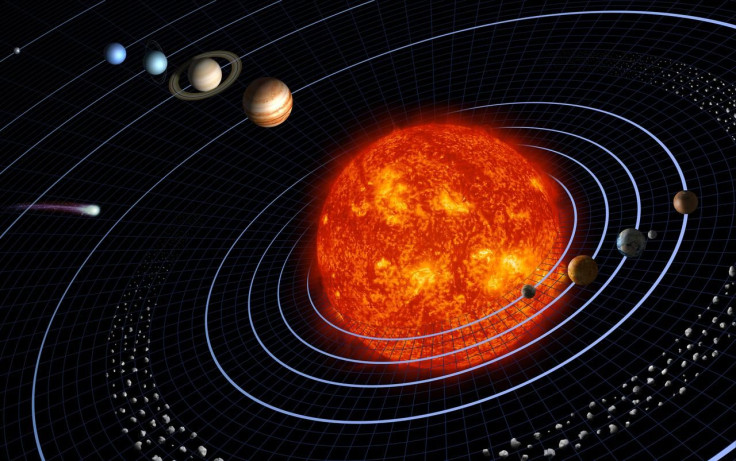Asteroids In Mars Orbit Are The Remains Of A Destroyed Planet

Those asteroids orbiting near Mars may not be asteroids at all — they are probably what’s left of a small planet that was destroyed in a collision while our solar system was still growing up.
Astronomers using the Very Large Telescope in Chile say the asteroids, known as Mars Trojans, appear to have similar compositions, suggesting a common origin, according to a study in the Monthly Notices of the Royal Astronomical Society.
Read: Places on Earth That Are Kind of Like Mars
There are nine Trojans sharing an orbit around the Sun with Mars, all but one of them trailing the Red Planet in its movement. And of the Trojans trailing Mars, all but one are in what’s known as the Eureka family — which includes the first-discovered piece called Eureka and the others that are surrounding it.
The Armagh Observatory in Northern Ireland explained that the astronomers used the Very Large Telescope to see what colors of sunlight were reflecting off the surfaces of two of the Eureka asteroids. That information offers details about what they are made of. Because they appear to be so similar to the main Eureka asteroid, the scientists say their observations confirm “the genetic relationship between family asteroids.”
Simply having a common origin, however, does not automatically mean the asteroids were once part of a planet. That’s where the exact composition comes in: The study says their surfaces contain a lot of the mineral olivine, which was a common feature of mini-planets — objects much larger than asteroids — that formed in the inner solar system during its early life. Such a mini-planet would have had features similar to Earth and Mars like a crust, mantle and core, but collisions with other bodies during the formation of the solar system destroyed it.
“These asteroids might well be samples of the original building blocks that came together to form Mars and of the other terrestrial planets,” the observers wrote.
Mars is the only terrestrial planet with Trojans in its orbit, but there are also gas planets with their own Trojans. Jupiter, the largest planet in our solar system, has about 6,000 of them.
See also:
A Little Friend for the Mars Rover
Robots with Buzzsaws Will Dig Through Ice to Look for Aliens
© Copyright IBTimes 2025. All rights reserved.





















